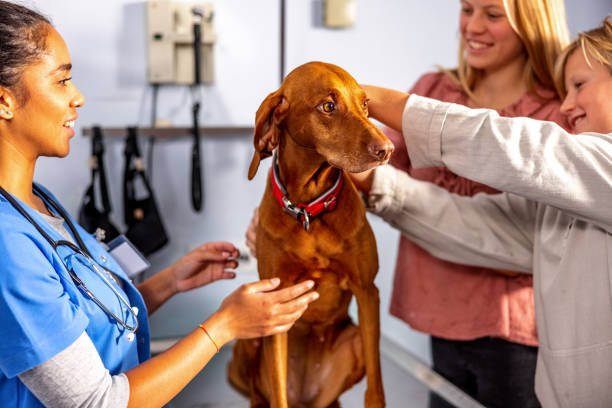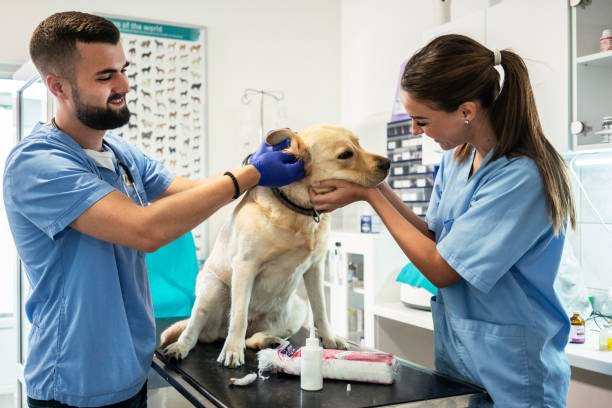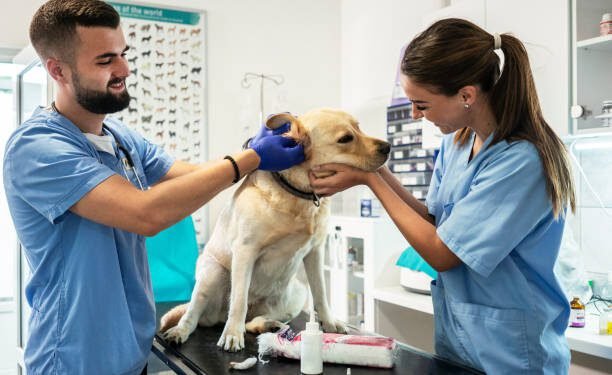In the world of canine healthcare, there are many medications that play a crucial role in enhancing the quality of life for our furry companions. Keppra®, one such medication, has been making a significant impact in the management of certain health conditions in dogs. This article aims to provide a comprehensive resource for dog owners, detailing the benefits, correct dosages, potential side effects, and more when it comes to using Keppra® for dogs.

Table of Contents
Essential Drug Information
Before delving into the specifics, let’s begin by creating a table summarizing vital drug information for veterinary use:
| Common Names | Drug Type | Used For | Administered | FDA Approved |
|---|---|---|---|---|
| Keppra® | Antiepileptic | Seizure Control | Tablets, Oral Liquid | Yes |
Keppra® is an antiepileptic drug commonly used in veterinary medicine to control seizures in animals. It is available in both tablet and oral liquid forms, making it versatile for different administration needs. Importantly, Keppra® is FDA approved, ensuring its safety and efficacy for use in pets. This medication is a crucial tool for veterinarians in managing epilepsy and maintaining the quality of life for affected animals.
II. Understanding Keppra®
What is Keppra®?
Keppra®, the brand name for levetiracetam, is an antiepileptic medication that has gained prominence in the field of canine healthcare. Levetiracetam is part of a class of drugs known as antiepileptics or anticonvulsants, which are primarily used to control seizures. Keppra® is FDA-approved for use in dogs, making it a trusted choice among veterinarians for managing various conditions involving seizures and epilepsy.
One of the distinguishing features of Keppra® is its effectiveness in controlling seizures while generally causing fewer side effects than some other antiepileptic medications. It’s important to note that Keppra® is available in different forms, including tablets and oral liquid, offering flexibility in how it can be administered to dogs.
How Does Keppra® Work in Dogs’ Bodies?
To understand how Keppra® works, it’s essential to grasp the fundamental processes of a seizure. Seizures are the result of excessive and abnormal electrical activity in the brain. These bursts of electrical activity can lead to involuntary muscle contractions, loss of consciousness, and other symptoms.Keppra® works by stabilizing and regulating this electrical activity in the brain.
Unlike some other antiepileptic drugs that primarily target voltage-gated sodium channels, Keppra® operates differently. It binds to synaptic vesicle protein 2A (SV2A), a protein found in neurons. By binding to SV2A, Keppra® exerts an inhibitory effect on neurotransmitter release. This inhibition helps prevent the excessive and synchronous firing of neurons that underlies seizures.
Common Conditions and Ailments in Dogs that Keppra® Can Treat or Manage
Keppra® has found application in treating a range of seizure-related conditions in dogs, including:
- Idiopathic Epilepsy: This is the most common cause of recurrent seizures in dogs. Keppra® is often prescribed as part of the treatment regimen for dogs with idiopathic epilepsy. It helps reduce the frequency and severity of seizures, ultimately enhancing the quality of life for affected dogs.
- Cluster Seizures: Cluster seizures involve multiple seizures occurring in a short span of time. Keppra® can be used to manage these clusters and prevent prolonged episodes that could lead to more severe complications.
- Status Epilepticus: This is a life-threatening condition characterized by prolonged and uncontrolled seizures. Keppra® may be administered as part of an emergency protocol to halt these seizures and prevent further neurological damage.
- Partial Seizures: Dogs experiencing partial seizures, which affect only a specific part of the brain, can also benefit from Keppra®. It helps in reducing the frequency and intensity of partial seizures.
- Other Seizure Types: Keppra® may also be prescribed for other types of seizures and convulsive disorders in dogs, depending on the veterinarian’s assessment of the specific case.
III. Benefits of Keppra® for Dogs
Keppra®, the antiepileptic medication that has become a cornerstone in managing seizures in dogs, offers a multitude of benefits that extend beyond seizure control. Understanding these advantages is essential for both veterinarians and dog owners seeking to enhance the well-being of their canine companions.
1. Effectiveness in Treating Seizures:The primary and most recognized benefit of Keppra® for dogs is its remarkable effectiveness in treating seizures. Keppra® stands out for its ability to significantly reduce the frequency and severity of seizures, making it a valuable asset in managing various forms of epileptic conditions.
This includes idiopathic epilepsy, partial seizures, and even status epilepticus, a life-threatening emergency.Keppra®’s mechanism of action, which involves binding to synaptic vesicle protein 2A (SV2A) to regulate neuronal activity, allows it to provide relief from seizures without causing excessive sedation or other severe side effects often associated with alternative antiepileptic drugs.
This makes Keppra® a preferred choice for many veterinarians, as it not only effectively controls seizures but also ensures that dogs maintain a good quality of life.
2. Improved Quality of Life:Beyond its role in managing seizures, Keppra® can profoundly enhance a dog’s overall quality of life. Uncontrolled and frequent seizures can be emotionally distressing for both dogs and their owners. They disrupt daily routines, causing anxiety and fear. By effectively reducing the occurrence of seizures, Keppra® allows dogs to lead more normal and happy lives.Here’s how Keppra® contributes to improving a dog’s quality of life:
A. Reduced Stress and Anxiety:Dogs that experience frequent seizures often live in a state of perpetual anxiety. The unpredictability of seizures can be emotionally draining. Keppra® helps in breaking this cycle by reducing the number of seizures, offering dogs a sense of calm, security, and a better quality of life.
B. Enhanced Physical Well-Being:The intense physical exertion during seizures can be physically exhausting. Keppra® helps conserve a dog’s energy by minimizing these episodes. This means that dogs on Keppra® are less fatigued and more active.
C. Better Interaction and Training:Seizures can disrupt the interaction between dogs and their owners, making training and bonding challenging. With fewer seizures, dogs become more receptive to training and are better companions for their human families.
D. Fewer Side Effects:Another notable benefit of Keppra® is its favorable side effect profile. It is generally well-tolerated, which means that dogs can experience the benefits without suffering from a multitude of adverse reactions. This is in stark contrast to some other antiepileptic medications that may cause significant sedation or other side effects.
E. Prevention of Seizure Progression:Allowing seizures to go unmanaged can lead to a phenomenon known as kindling, where the brain becomes more susceptible to seizures over time. Keppra® helps prevent this kindling process, ensuring that seizures do not become more frequent or severe.Keppra® for dogs, through its efficacy in controlling seizures and its ability to enhance overall well-being, plays a vital role in preserving the mental and physical health of dogs affected by epilepsy and other seizure-related conditions.
IV. Administering Keppra® to Dogs
Administering Keppra® to dogs is a crucial aspect of epilepsy management. To ensure its effectiveness and your dog’s safety and comfort, it’s essential to adhere to specific dosage guidelines and administration methods. This section provides detailed information on how to correctly give Keppra® to your canine companion.
Keppra Dosage Chart for Dogs
Here’s a general dosage guide for Keppra (Levetiracetam) in dogs. It’s crucial to follow your veterinarian’s specific recommendations, as they will tailor the dosage to your dog’s individual needs.
Standard Dosage
- Initial Dose: 5-10 mg per pound (10-20 mg/kg) of body weight, administered three times daily (every 8 hours).
- Extended-Release Tablets: Typically given twice daily.
Emergency Management
- Higher Doses: In emergency situations, higher doses towards the 10 mg per pound mark may be required.
Example Dosage Chart
| Dog’s Weight | Standard Dose (3x daily) | Extended-Release Dose (2x daily) |
|---|---|---|
| 10 lbs (4.5 kg) | 50-100 mg | 50-100 mg |
| 20 lbs (9 kg) | 100-200 mg | 100-200 mg |
| 30 lbs (13.5 kg) | 150-300 mg | 150-300 mg |
| 40 lbs (18 kg) | 200-400 mg | 200-400 mg |
| 50 lbs (22.5 kg) | 250-500 mg | 250-500 mg |
Important Considerations
- Frequency: Keppra is usually given three times a day due to its short half-life.
- Monitoring: Regular monitoring by your veterinarian is essential to adjust the dosage as needed and to check for any side effects.
- Food: Keppra can be given with or without food.
Always consult your veterinarian before starting or adjusting the dosage of Keppra for your dog. They will provide the most accurate and safe dosage based on your dog’s specific condition and response to the medication.
2. Frequency of Administration:
Keppra (Levetiracetam) is typically administered to dogs three times a day due to its short half-life of about 4-6 hours. This frequent dosing ensures that the medication maintains a consistent level in the bloodstream, which is crucial for effectively managing seizures. The standard dosage is usually 5-10 mg per pound (10-20 mg/kg) of body weight, given every 8 hours.
For dogs requiring extended-release tablets, the frequency can be reduced to twice daily, as these tablets are designed to release the medication slowly over a longer period. It’s important to follow your veterinarian’s specific instructions and not to miss doses, as this can lead to breakthrough seizures. If a dose is missed, it should be given as soon as remembered, but never doubled up3. Regular monitoring and adjustments by a veterinarian are essential to ensure the best therapeutic outcomes for your dog.
3. Directions for Use:
Administering Keppra® to your dog can sometimes be challenging, especially if your dog is finicky about taking medications. Here are some tips to help ease the process:
- Crushing Tablets: If your dog refuses to swallow tablets, you can ask your veterinarian if it’s acceptable to crush Keppra® tablets and mix them with a small amount of soft food. Ensure your dog consumes the entire mixture to guarantee they receive the full dose.
- Hide in Treats: Another effective method is to hide the tablet in a soft treat or a small amount of canned food. Ensure your dog eats the entire treat or food to receive the complete dose.
- Ask for a Liquid Formulation: If your dog is particularly difficult to medicate or has a condition that affects their ability to swallow, ask your veterinarian if a liquid form of Keppra® is available. This can be easier to administer, especially if your dog has specific dietary restrictions.
- Use a Pill Dispenser: Pill dispensers are designed to hold tablets, making it easier to place the medication at the back of your dog’s throat. Follow it with a small amount of water to ensure the pill is swallowed properly.
- Be Consistent: Try to administer Keppra® at the same times each day. This consistency can help your dog get accustomed to the routine and make the process smoother.
4. Importance of Adhering to Prescribed Dosages:
Adhering to the prescribed dosages of Keppra® is essential for effectively managing your dog’s seizures. Skipping doses or altering the medication schedule can lead to breakthrough seizures or worsen the condition. It’s important to remember that Keppra® works best when it is maintained at a consistent level in the bloodstream.Moreover, the dosage prescribed by your veterinarian is tailored to your dog’s specific condition, weight, and health status. Deviating from the prescribed dosage can lead to overdosage, which may cause adverse effects, or underdosage, which can render the medication ineffective.
5. Missed Dose Guideline:
If you forget to administer a dose, it’s generally recommended to give the missed dose as soon as you remember, as long as it’s not close to the next scheduled dose. If you’ve missed more than one dose or it’s close to the next scheduled dose, it’s advisable to skip the missed dose and continue with the regular dosing schedule. Do not double the dose to compensate for the missed one, as this can result in undesirable side effects or other complications.

V. Potential Side Effects and Precautions
While Keppra® is a valuable medication for managing seizures in dogs, like any pharmaceutical, it can potentially lead to side effects. It’s essential to be aware of commonside effects, identify severe or adverse reactions, and take precautions when using Keppra® in specific situations.
1. Common Side Effects of Keppra® in Dogs:
The majority of dogs tolerate Keppra® well, and many experience minimal to no side effects. However, some dogs may exhibit mild side effects that typically resolve as their bodies adjust to the medication. Common side effects may include:
- Sedation: Drowsiness or sleepiness may occur, especially during the initial days of Keppra® treatment. This is generally transient and tends to diminish as your dog’s body adapts to the medication.
- Mild Gastrointestinal Upset: Some dogs might experience mild digestive issues, such as nausea, vomiting, or diarrhea. Ensuring that Keppra® is administered with food can help alleviate these symptoms.
- Loss of Appetite: Your dog may temporarily lose interest in eating. To mitigate this, try offering highly palatable and favorite foods.
If your dog experiences any of these side effects, it’s often best to monitor them closely. The symptoms are usually mild and should resolve as your dog’s system becomes accustomed to the medication. However, if they persist or worsen, consult your veterinarian for guidance.
2. Identifying Severe or Adverse Reactions:
While most dogs tolerate Keppra® without any issues, severe or adverse reactions are possible, although they are relatively rare. It’s essential to recognize these reactions and seek immediate veterinary attention if they occur. Severe or adverse reactions may include:
- Allergic Reactions: Signs of an allergic reaction can include hives, facial swelling, difficulty breathing, or severe itching. If you notice any of these symptoms, discontinue the medication and contact your veterinarian immediately.
- Behavioral Changes: Keppra® can cause behavioral changes in some dogs, including aggression, agitation, or unusual hyperactivity. Notify your veterinarian if you observe significant alterations in your dog’s behavior while taking the medication.
- Blood Disorders: In rare cases, Keppra® has been associated with blood disorders in dogs. Watch for signs such as unexplained bruising, bleeding, or lethargy. If you observe these symptoms, seek immediate veterinary assistance.
3. Precautions for Pregnant or Lactating Dogs:
The safety of using Keppra® in pregnant or lactating dogs has not been thoroughly studied. It’s crucial to consult with your veterinarian if your dog is pregnant or nursing. In some cases, your veterinarian may recommend alternative seizure management strategies or closely monitor your dog’s health while administering Keppra®.
4. Interactions with Other Medications or Supplements:
When administering Keppra (Levetiracetam) to your dog, it’s important to be aware of potential interactions with other medications or supplements. Here are some key points to consider:
Potential Drug Interactions
- Carbamazepine: This medication can interact with Keppra, potentially altering its effectiveness.
- Central Nervous System (CNS) Depressants: Combining Keppra with CNS depressants can enhance sedative effects.
- Methotrexate: Use with caution as it may affect the efficacy of Keppra.
- Nonsteroidal Anti-Inflammatory Drugs (NSAIDs): These can interact with Keppra, potentially increasing the risk of side effects.
- Phenobarbital: Often used in combination with Keppra, but requires careful monitoring to avoid adverse effects.
Supplements and Herbal Therapies
While specific interactions with supplements and herbal therapies are not well-documented, it’s crucial to inform your veterinarian about any additional products your dog is taking. This includes vitamins, herbal supplements, and over-the-counter medications.
Monitoring and Precautions
- Seizure Activity: Keep a detailed record of your dog’s seizure activity and any changes observed after starting Keppra.
- Side Effects: Watch for signs of increased sedation, gastrointestinal upset, or behavioral changes.
- Veterinary Guidance: Always consult your veterinarian before adding or changing any medications or supplements to ensure the safety and well-being of your dog.
By staying informed and working closely with your veterinarian, you can help manage your dog’s condition effectively while minimizing the risk of adverse interactions.
VI. Consultation with a Veterinarian
As a devoted dog owner, you play a crucial role in ensuring your furry companion’s well-being. When it comes to managing your dog’s health and administering medications like Keppra®, professional guidance is invaluable.
1. The Importance of Professional Guidance:
When it comes to your dog’s health, especially the management of a condition like epilepsy, professional guidance is non-negotiable. Your veterinarian is the most qualified individual to determine the appropriate course of treatment, prescribe medications, and oversee your dog’s overall health.
A veterinarian’s role in the use of Keppra® includes:
- Diagnosis: Properly diagnosing the underlying cause of your dog’s seizures or epilepsy, which may involve various tests and evaluations.
- Monitoring: Overseeing your dog’s response to the medication and making necessary adjustments to the treatment plan over time.
- Addressing Concerns: Providing guidance on potential side effects, precautions, and interactions with other medications or supplements.
-
Regular Check-ups: Monitoring your dog’s health through regular check-ups and assessments to ensure the medication’s effectiveness and your dog’s well-being.
2. Overdose Information and Possible Toxicity/Effect:
Accidental overdose of Keppra® can lead to adverse effects, so it’s crucial to keep the medication out of your dog’s reach and administer it precisely according to your veterinarian’s instructions. If you suspect your dog has ingested too much Keppra®, contact your veterinarian or an emergency pet poison hotline immediately. Signs of overdose may include:
- Extreme sedation: Your dog may become excessively drowsy, lethargic, or unresponsive.
- Behavioral Changes: Agitation, restlessness, or unusual behaviors can indicate an overdose.
- Gastrointestinal Distress: Severe vomiting or diarrhea can result from an overdose.
3. Signs or Symptoms When to Call the Vet:
While administering Keppra® to your dog, it’s essential to remain vigilant for any unusual signs or symptoms that may indicate issues with the medication, the condition it’s treating, or other underlying health concerns. Contact your veterinarian if you notice:
- Worsening Seizures: If your dog’s seizures become more frequent, severe, or different from their usual pattern, this is a sign to call your vet.
- Intolerable Side Effects: If your dog experiences intolerable side effects, such as severe sedation, persistent vomiting, or significant behavioral changes, your vet should be informed.
- Allergic Reactions: If your dog displays signs of an allergic reaction, like hives, facial swelling, or difficulty breathing, immediate veterinary assistance is required.
- Liver or Blood-related Symptoms: Jaundice (yellowing of the skin or eyes), loss of appetite, unexplained bruising, bleeding, or lethargy should prompt a call to the vet.
4. How to Discuss Keppra® with Your Veterinarian:
Open and honest communication with your veterinarian is crucial to ensuring your dog’s well-being. When discussing Keppra® with your veterinarian:
- Provide a complete medical history, including any previous health issues, medications, and supplements your dog is taking.
- Clearly describe your dog’s symptoms and any changes in their condition or behavior.
- Share your observations regarding the medication’s effectiveness and any side effects or concerns you have noticed.
- Ask questions and seek clarification on any aspect of your dog’s treatment or condition that you don’t understand.
5. Seeking a Second Opinion if Needed:
While your primary veterinarian should be your first point of contact for your dog’s medical needs, it’s entirely appropriate to seek a second opinion in certain situations. If you have concerns about your dog’s diagnosis, treatment plan, or the use of Keppra®, here’s how to approach it:
- Communicate: Talk to your current veterinarian about your concerns. They may be able to address your worries and provide explanations that alleviate your apprehensions.
- Consult Another Veterinarian: If you still have concerns after speaking with your primary veterinarian, consider consulting another veterinarian. A fresh perspective and additional expertise can be invaluable.
- Collaboration: In some cases, your two veterinarians may work together to determine the best approach for your dog’s care.
- Trust Your Instincts: As a dog owner, you know your pet better than anyone. If your instincts tell you that something isn’t right, don’t hesitate to seek another opinion.
VII. Comparison with Similar Drugs in this Category
When it comes to managing seizures and epilepsy in dogs, Keppra® is just one option among several medications.
Here’s a comparison of Keppra (Levetiracetam) with other common anti-convulsant drugs used for dogs:
Keppra (Levetiracetam)
- Uses: Primarily used to treat seizures and epilepsy in dogs.
- Benefits: Generally well-tolerated with fewer side effects compared to some other anti-convulsants.
- Side Effects: Mild sedation, decreased appetite, and lethargy.
- Dosage: Typically administered 2-3 times daily.
Phenobarbital
- Uses: Widely used for long-term management of epilepsy in dogs.
- Benefits: Effective in controlling seizures.
- Side Effects: Potential for liver damage, increased thirst and urination, sedation.
- Dosage: Usually given twice daily.
Potassium Bromide
- Uses: Often used in combination with other anti-convulsants for refractory epilepsy.
- Benefits: Effective for dogs that do not respond well to other medications.
- Side Effects: Increased thirst and urination, sedation, gastrointestinal upset.
- Dosage: Administered once daily.
Diazepam (Valium)
- Uses: Used for emergency treatment of seizures and as a muscle relaxant.
- Benefits: Fast-acting, useful for stopping active seizures.
- Side Effects: Sedation, increased appetite, potential for dependence.
- Dosage: Given as needed for acute seizures.
Comparison Summary
- Effectiveness: All these drugs are effective in controlling seizures, but their suitability depends on the individual dog’s response and any underlying health conditions.
- Side Effects: Keppra is often preferred for its lower risk of severe side effects, while Phenobarbital and Potassium Bromide are more likely to cause significant side effects.
- Administration: Keppra and Phenobarbital require more frequent dosing compared to Potassium Bromide.
It’s always best to consult with your veterinarian to determine the most appropriate medication for your dog’s specific needs. Do you have any other questions about these medications or need more details on a specific one?
Frequently asked questions
What is Keppra for dogs?
Keppra is a brand name for levetiracetam, a medication that can be used to treat seizures in dogs and cats. It is often used in combination with other anti-seizure drugs, such as phenobarbital or potassium bromide, when they are not enough to control the seizures or cause unwanted side effects.
How does Keppra work for dogs?
Keppra works by affecting the brain’s neurotransmitters, which are chemicals that help nerve cells communicate with each other. Keppra reduces the abnormal electrical activity in the brain that causes seizures.
What is the dosage of Keppra for dogs?
The dosage of Keppra for dogs depends on several factors, such as the weight of the dog, the severity and frequency of the seizures, and the response to other medications. Your veterinarian will prescribe the appropriate dose and schedule for your dog. Keppra comes in different forms, such as tablets, extended-release tablets, oral solution
How long for Keppra to work in dogs
:Keppra typically starts working within 1 to 2 hours
How much is Keppra for dogs:
The average cost of a 500mg tablet is around $41.99, with the lowest price being $15.97.
Can Keppra be crushed for dogs:
Immediate-release tablets can be crushed, but extended-release tablets should not be
How much does Keppra cost for dogs:
Keppra costs approximately $170 per month
Where to buy Keppra for dogs:
You can buy Keppra from pet pharmacies like Petco, 1800PetMeds etc



















